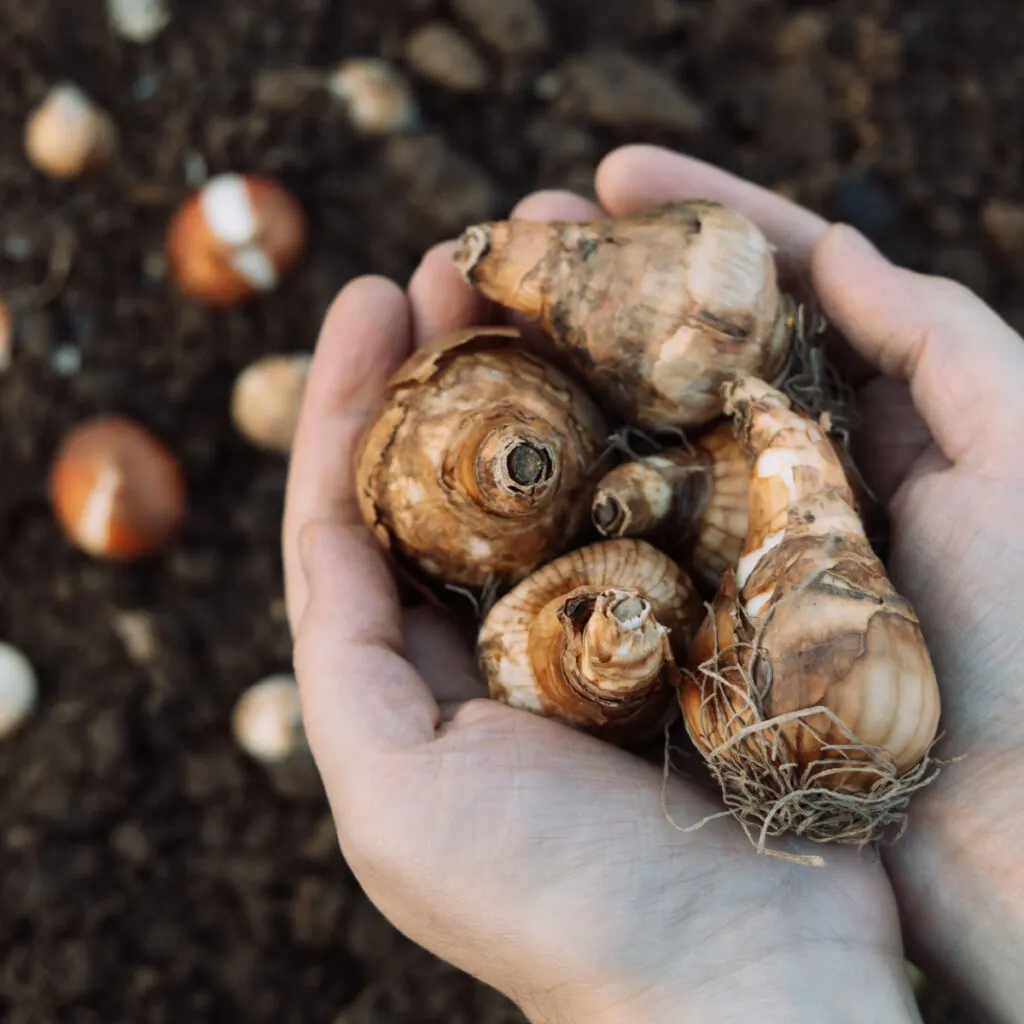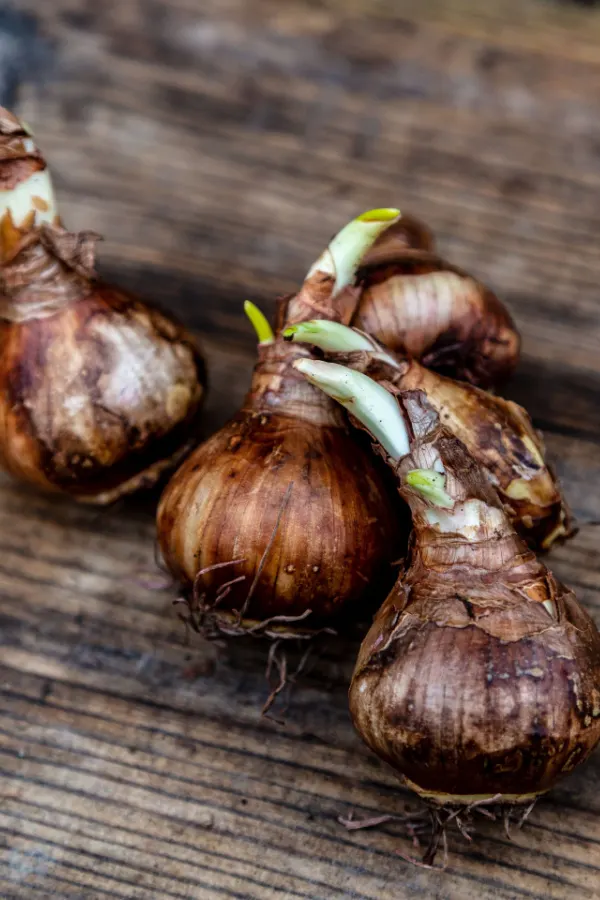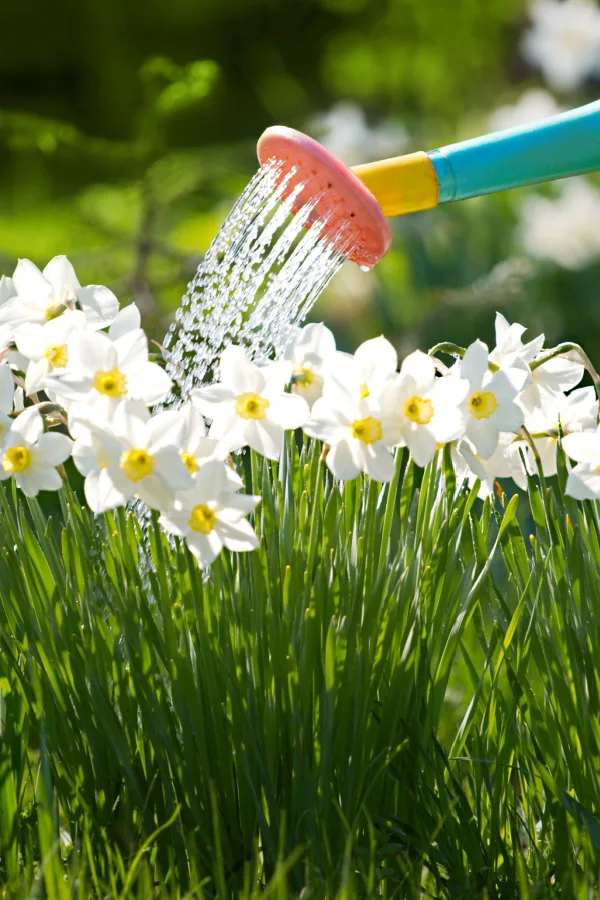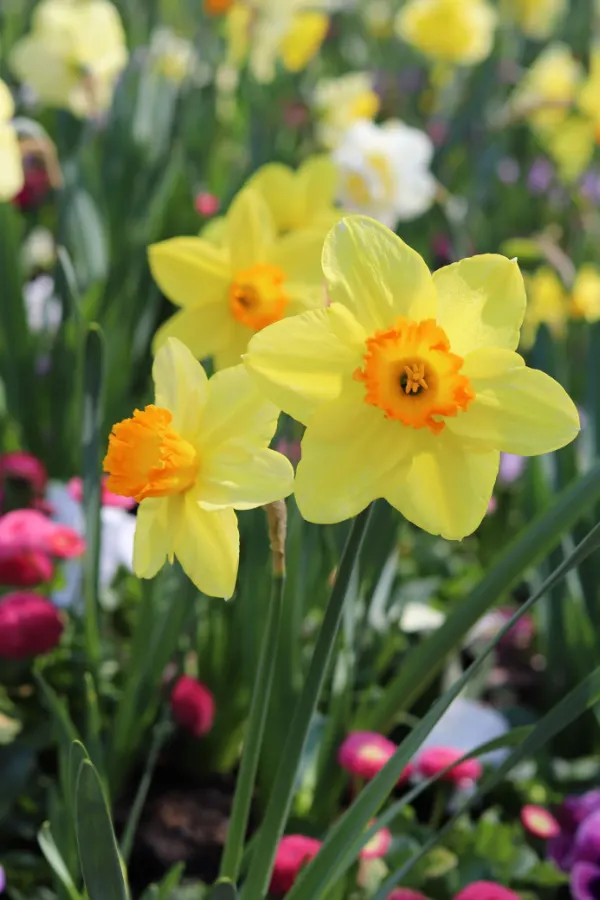If you are looking for a great way to add early spring color to your landscape, then late fall is the time to plant daffodils before the cold of winter arrives!
Daffodils are one of the hardiest and earliest spring-blooming flowers around. Their beautiful trumpet-shaped blooms burst forth to announce the end of winter – sometimes even with snow still flying in the air!
But beyond their durability and beautifully colored blooms, daffodils also happen to be one of the easiest of all bulbs to plant and grow. Even better, they also are rarely bothered by pests. Daffodils are both deer resistant and rodent proof – making them a perfect fit for locations where squirrels and other pests often dig up planted bulbs.

Daffodils look great in all kinds of plantings, from border plants along pathways and sidewalks, to large cluster plantings in flowerbeds. And they can fill in even more over time as the bulbs multiply. In fact, a daffodil bulb can multiply ever year as long as the plant gets plenty of sunlight and grows in good soil. Talk about a single planting effort that just keeps getting better!
Varieties of Daffodils To Plant – How To Plant Daffodils Before Winter
There are several different varieties of daffodil flowers, with most being grouped together based on their appearance. Depending on the variety, they can range in height from 6 inches tall all the way up to 30 inches or more.
Traditional daffodils grow on long stems with trumpet-shaped centers. Each center is surrounded by 6 distinct petals. Daffodil flowers bloom only once each season, with blooms usually lasting around 2 to 3 weeks.
Daffodils typically come in colors of yellow, white, orange, red, and pink. They are wonderful for inter-planting with other spring-blooming flowers such as tulips, hyacinths, and crocuses. (See, “Planting Fall Bulbs – The Best Bulbs To Plant For Stunning Spring Color!“)
How To Plant & Grow Daffodils Before Winter
Growing great daffodils all starts with selecting healthy bulbs. They should be free of mold, disease and any other damage. In addition, bulbs should be plump and not appear overly dry or dried out. You can often find local nurseries that carry them in the fall. If not, you can also order bulbs online as well. Affiliate Link: 50 Yellow Daffodil Bulbs for Planting

Once you purchase your bulbs, store them in a dry location with temperatures between 40 to 70º Fahrenheit (F) until you are ready for planting. The location needs to have plenty of air circulation or they risk getting moldy.
When To Plant – How To Plant Daffodils Before Winter
To bloom in the early spring, daffodil bulbs require a cold period of 12 to 16 weeks with temperatures below 35 to 45º F. This means that you need to plant bulbs in the fall for most mid-western and northern locations in October and November. For southern climates, late November and December are better as the winter chill occurs a bit later.
For locations with colder winters, get the bulbs in the ground around 2 to 4 weeks before your ground freezes. Planting early allows the daffodil bulbs to get their roots established before going dormant in the winter. The soil should be at least 60º F before planting.
Choose a location that receives full sun or dappled light. The most important part is to make sure that the location has soil that drains well. Daffodil flowers can grow in about any soil type, but they prefer neutral to slightly acidic soil.

To plant, begin by digging a hole that is 4 to 8 inches deep and 4 to 6 inches wide. A good rule of thumb for the depth of your hole is to dig it 3 times as deep as the bulb is tall. Next, add a few inches of compost into the bottom of the hole.
Place the daffodil bulb into the hole with the pointy end up, pressing it well into the layer of compost. Backfill with a 50/50 percent mixture of soil and compost. Lightly tamp down the soil, and water well. You should not need to water again until spring.
After planting, add a couple of inches of mulch to keep competing weeds at bay. Mulch also helps to add additional protection from the elements, keeping the soil from having wild temperature swings that can affect the bulbs performance.
Long-Term Care – How To Plant Daffodils Before Winter
Daffodil bulbs will go dormant during the winter months. Once spring arrives and the daylight hours start to become longer, the shoots will start to come up through the soil. This happens around March for many locations, but some varieties of daffodils will bloom later in spring.
Don’t be surprised if you happen to have an early warm spell and see greenery shooting through the soil even earlier. The good news is daffodils are very hardy. They can take the cold and even a little snow without worry.

Watering & Fertilizing – How To Plant Daffodils Before Winter
Daffodil bulbs are extremely susceptible to excessive water. Water very sparingly while they bloom – and only when the soil is dry deep down. Do not water your blooms overhead with a sprinkler or sprayer. This can cause blooms to fall off and also to prematurely fade. Instead, water at the base of the flowers whenever possible.
Stop watering plants around 3 to 4 weeks after the blooms fade. This allows the bulbs to dry out so they can go dormant over the summer. It also will make it easier to dig up the bulbs to store until fall if needed.
Daffodils are not heavy feeders so they do not require fertilizer. However, you can fertilize with a light dose of bulb-specific fertilizer to help assist with blooming. (Affiliate Product Link: Espoma Organic Bulb Fertilizer)
Pruning – How To Plant Daffodils Before Winter
Once daffodil blooms start to fade, you can remove the spent blooms. Just make sure you don’t remove the remaining leaves and foliage. The leaves and foliage provide nutrients to the bulbs for next year’s blooms. After the foliage dies naturally, you can then cut it back completely.
As long as your winter temperatures drop below 45º F, daffodil bulbs can remain in the ground for overwintering. In warmer locations, you will need to dig up your bulbs and store in a cool, dry location inside. Left outside through the hot summer, they will struggle to not rot out.
No matter where you grow, bulbs should be dug up every 3 to 4 years to avoid overcrowding. Keep only the best bulbs to replant, making sure to space them out properly when you replant in the fall.
Pests & Issues – How To Plant Daffodils Before Winter
Daffodils that are planted in the fall are fairly hardy, but they are prone to issues associated with overly wet soil. Diseases such as gray mold and bulb rot are the most common issues. Pests like narcissus nematode, bulb mites, snails, slugs, and bulb flies can also be problems if found in large numbers.

A great advantage of daffodils is that they are not appealing to pests. Planting them among other bulbs that are targets for these animals can help deter squirrels and chipmunks from attacking them, saving all of your bulb plantings in the process. Once spring rolls around, and after your daffodils blooms have faded, be sure to check out What To Do With Daffodils After They Bloom – Why To Avoid Cutting Back Too Soon!
Here’s to planting daffodils before winter arrives – and to bringing big early spring color to your flowerbeds next year!
Follow Our Facebook Page For Even More Great Tips! Simple Garden Life Facebook Page
Simple Garden Life is a website dedicated to keeping gardening fun, simple and enjoyable! We publish two new articles each week along with a new garden podcast episode every two weeks. This article may contain affiliate links.
